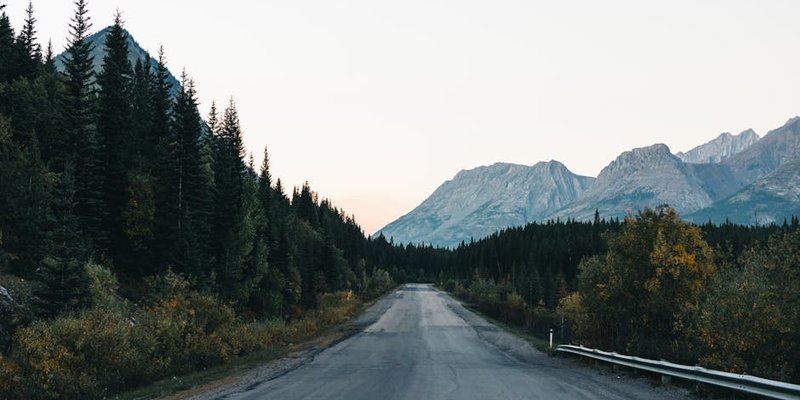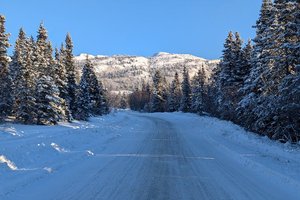The Canadian Rocky Mountains stand as one of the world's most iconic mountain ranges, stretching across the provinces of Alberta and British Columbia. With their jagged peaks, turquoise lakes, ancient glaciers, and diverse wildlife, the Rockies offer visitors an unparalleled natural experience. As a mountain guide who has spent over a decade leading tours through this remarkable landscape, I'm excited to share my comprehensive guide to exploring the Canadian Rockies.
Whether you're planning your first visit or returning to discover new corners of this vast wilderness, this guide will help you navigate the region's highlights, hidden gems, and practical considerations for an unforgettable Rocky Mountain adventure.
Understanding the Canadian Rockies
The Canadian Rockies form part of the North American Rocky Mountain range, but their distinct geology sets them apart. While the American Rockies are primarily composed of granite and other igneous rocks, the Canadian Rockies feature dramatic layered sedimentary rock that has been thrust upward by tectonic forces. This unique geology creates their characteristic jagged profile and contributes to the stunning turquoise color of the glacier-fed lakes in the region.
The Canadian Rockies span approximately 180,000 square kilometers and include five national parks:
- Banff National Park (Canada's first national park, established in 1885)
- Jasper National Park
- Kootenay National Park
- Yoho National Park
- Waterton Lakes National Park
Together with provincial parks Mount Robson, Mount Assiniboine, and Hamber, these parks form the Canadian Rocky Mountain Parks World Heritage Site, recognized by UNESCO for their outstanding natural beauty and geological significance.
When to Visit the Rockies
Each season in the Rockies offers a distinct experience, and the best time to visit depends on your interests and activities.
Summer (June to August)
Peak tourist season brings warm temperatures (15-25°C/59-77°F) and the longest daylight hours, ideal for hiking, wildlife viewing, and water activities. All roads and hiking trails are typically accessible, and alpine wildflowers reach their peak in late July to early August. However, this is also the most crowded time, with higher accommodation rates and the need to book well in advance.
Fall (September to October)
My personal favorite time in the Rockies, fall brings golden larch trees, fewer crowds, and pleasant temperatures for hiking. Wildlife is more active as animals prepare for winter, and photographers will appreciate the warm light and fall colors. Some facilities begin to close in October, and snow may arrive at higher elevations.
Winter (November to March)
The Rockies transform into a winter wonderland with opportunities for skiing, snowboarding, ice climbing, snowshoeing, and ice skating on frozen lakes. The Icefields Parkway between Banff and Jasper offers stunning snow-covered vistas, though it can close during storms. Winter temperatures typically range from -5°C to -15°C (23°F to 5°F), but can drop below -30°C (-22°F).
Spring (April to May)
A shoulder season characterized by variable weather, with snow still present at higher elevations while valleys begin to green. Wildlife becomes more active, including newly born animals, and there are fewer visitors. Lower elevation hiking trails become accessible, though higher ones may remain snow-covered until June. Be prepared for rain and fluctuating temperatures.
Pro Tip
Consider visiting in late September to early October to experience the beautiful fall colors, wildlife activity, and significantly fewer crowds than summer. You'll need to pack for variable weather, but the trade-off in terms of solitude and photography opportunities is well worth it.
Exploring Banff National Park
As Canada's first national park and one of its most visited, Banff offers a spectacular concentration of mountain scenery, wildlife, and outdoor activities. Here are the must-see highlights:
The Town of Banff
This charming mountain town serves as the main hub for the park with excellent dining, shopping, and cultural attractions. Don't miss the Banff Park Museum, the historic Banff Springs Hotel, and the Banff Gondola for panoramic views from Sulphur Mountain.
Lake Louise
Perhaps the most photographed lake in Canada, Lake Louise features stunning turquoise waters surrounded by towering peaks and the Victoria Glacier. Activities include:
- Hiking the Lake Agnes Tea House trail (7.6 km round trip) for mountain views and homemade baked goods
- Canoeing on the pristine waters (rentals available at the boathouse)
- The Plain of Six Glaciers trail (13.8 km round trip) for more dramatic mountain scenery
- Winter ice skating and the Ice Magic Festival in January
Moraine Lake
This glacier-fed lake in the Valley of the Ten Peaks features an even more intense blue than Lake Louise due to a higher concentration of rock flour. The view from the Rockpile Trail is the scene that once appeared on Canadian twenty-dollar bills.
Important Note
Due to extreme popularity, personal vehicle access to Moraine Lake is now restricted. Visitors must use the Parks Canada shuttle service, commercial tour operators, or arrive by bicycle. Reserve shuttle tickets well in advance through the Parks Canada website.
Johnston Canyon
This accessible trail features catwalks built into the canyon walls, leading to the spectacular Lower and Upper Falls. In winter, ice climbers scale the frozen waterfalls, creating a dramatic scene.
Vermilion Lakes
Just outside the Banff townsite, these lakes offer superb views of Mount Rundle, especially at sunrise and sunset. Wildlife sightings are common, and the area is accessible year-round.
Sunshine Meadows
During summer and fall, take the gondola up to explore these alpine meadows with spectacular wildflowers and mountain views. Numerous hiking trails range from easy strolls to more challenging routes.
Discovering Jasper National Park
Larger and less crowded than Banff, Jasper National Park offers a more rugged wilderness experience with equally stunning mountain landscapes.
Maligne Lake and Spirit Island
The largest glacially fed lake in the Canadian Rockies, Maligne Lake is home to Spirit Island, one of the most photographed locations in the Canadian Rockies. Take a boat tour to the island or rent a kayak for a full-day paddle adventure.
Athabasca Falls
Not the highest waterfall but impressive for its power as the Athabasca River squeezes through a narrow gorge. Well-maintained walkways and viewing platforms make it accessible for all visitors.
Columbia Icefield and Athabasca Glacier
The largest ice field in the Rocky Mountains, straddling the boundary between Banff and Jasper. Take a specialized Ice Explorer vehicle tour onto the Athabasca Glacier, or join a guided ice walk to learn about glacial features.
Maligne Canyon
A stunning limestone gorge reaching 50 meters deep in places. In summer, hike the network of bridges crossing the canyon; in winter, join a guided ice walk through the frozen canyon bottom.
Mount Edith Cavell
A dramatic peak with the stunning Cavell Meadows trail offering views of Angel Glacier cascading down the north face. Watch for pikas and marmots among the rocks.
Jasper Dark Sky Preserve
Designated as a Dark Sky Preserve, Jasper offers exceptional stargazing opportunities with minimal light pollution. The annual Jasper Dark Sky Festival in October celebrates with special events and programming.
The Icefields Parkway
Connecting Banff and Jasper, the 230-kilometer Icefields Parkway (Highway 93) ranks among the world's most scenic drives. Plan a full day to explore this route, with key stops including:
- Bow Lake: With picturesque views of Crowfoot Mountain and Bow Glacier
- Peyto Lake: A wolf-shaped lake with an unforgettable turquoise color viewable from the easily accessible overlook
- Columbia Icefield: As noted above
- Sunwapta Falls: Impressive falls fed by the Athabasca Glacier
- Athabasca Falls: As described in the Jasper section
Driving Tip
Fill your gas tank before starting the Icefields Parkway, as there's only one fuel station along the route at Saskatchewan River Crossing. Cell phone coverage is limited, so download offline maps. In winter, check road conditions at Parks Canada visitor centers, as the parkway isn't maintained overnight between November and April.
Wildlife Viewing in the Rockies
The Canadian Rockies are home to an impressive array of wildlife, including:
- Large mammals: Grizzly bears, black bears, elk, moose, bighorn sheep, mountain goats, wolves
- Smaller mammals: Marmots, pikas, ground squirrels, beavers
- Birds: Golden eagles, ospreys, gray jays (Canada's national bird), Clark's nutcrackers
Best Wildlife Viewing Locations
- Bow Valley Parkway (Highway 1A): Early morning drives between Banff and Lake Louise
- Moraine Lake Road: Dawn and dusk for deer and occasionally bears
- Maligne Lake Road: Excellent for bear and moose sightings
- Medicine Lake: Frequent wildlife sightings around the shoreline
- Minnewanka Loop: Bighorn sheep, elk, and occasionally bears
Wildlife Safety
Viewing wildlife is a privilege that comes with responsibility:
- Always maintain at least 100 meters (328 feet) from bears and wolves
- Keep at least 30 meters (98 feet) from all other wildlife
- Never feed any wildlife, including small animals like squirrels
- Carry bear spray when hiking and know how to use it
- Make noise when hiking to avoid surprising animals
- If photographing wildlife from your vehicle, pull completely off the road
Hiking in the Rocky Mountains
With thousands of kilometers of trails, the Canadian Rockies offer hiking opportunities for all skill levels.
Easy Day Hikes (1-4 hours)
- Johnston Canyon to Lower Falls: 2.4 km round trip on well-maintained boardwalks
- Bow River Loop: 2.4 km flat path around Banff townsite
- Lake Louise Lakeshore: 4.0 km flat path along the stunning lake
- Moraine Lake Rockpile: 0.8 km short climb to the iconic viewpoint
- Valley of the Five Lakes (Jasper): 4.5 km loop past five beautiful colored lakes
Moderate Day Hikes (4-6 hours)
- Lake Agnes Tea House: 7.6 km round trip with 400m elevation gain
- Tunnel Mountain: 4.3 km round trip with 300m elevation gain
- Sulphur Mountain: 10.9 km round trip with 655m elevation gain (or take the gondola up and hike down)
- Wilcox Pass (Jasper): 8.0 km round trip with stunning views of the Columbia Icefield
Challenging Day Hikes (6+ hours)
- Plain of Six Glaciers: 13.8 km round trip with 365m elevation gain
- Sentinel Pass via Larch Valley: 10.9 km round trip with 725m elevation gain
- Cascade Amphitheatre: 13.2 km round trip with 640m elevation gain
- Edith Cavell Meadows: 8.5 km round trip with 500m elevation gain
Multi-day Backpacking Routes
- Berg Lake Trail (Mount Robson): 42 km round trip to Berg Lake
- Skyline Trail (Jasper): 44 km one-way, 25 km above treeline
- Rockwall Trail (Kootenay): 55 km one-way along a massive limestone cliff
Hiking Safety
Mountain weather changes rapidly. Always carry extra layers, rain gear, sufficient water, snacks, a headlamp, first aid kit, and bear spray. For popular trails like Lake Agnes and Plain of Six Glaciers, start early (before 8 AM) to avoid crowds and secure parking. Many backpacking routes require permits that book up months in advance.
Where to Stay in the Rockies
Iconic Mountain Lodges
- Fairmont Banff Springs Hotel: Historic "castle in the mountains" with luxury amenities
- Fairmont Chateau Lake Louise: Elegant lakeside hotel with unparalleled views
- Moraine Lake Lodge: Exclusive accommodation with early access to the lake before day visitors
- Fairmont Jasper Park Lodge: Rustic luxury on the shores of Lac Beauvert
Mid-Range Options
- Buffalo Mountain Lodge (Banff): Mountain-inspired rooms with wood-burning fireplaces
- Deer Lodge (Lake Louise): Historic lodge walking distance to Lake Louise
- Baker Creek Mountain Resort (Lake Louise): Cozy cabins along the Bow Valley Parkway
- Pyramid Lake Resort (Jasper): Peaceful lakeside chalets
Budget-Friendly Accommodations
- HI Hostels: Located in Banff, Lake Louise, and Jasper
- Parks Canada Campgrounds: Ranging from fully-serviced to primitive
- Marmot Lodge (Jasper): Comfortable, affordable rooms
- Irwin's Mountain Inn (Banff): Budget-friendly option in Banff town
Accommodation Tip
Book accommodations at least 6-9 months in advance for summer visits, especially in Banff and Lake Louise. For better rates and availability, consider staying in Canmore (just outside Banff National Park) or in Golden, BC (near Yoho National Park).
Dining in the Rockies
The Canadian Rockies offer excellent dining options that showcase local ingredients and Canadian cuisine.
Banff
- The Bison Restaurant: Farm-to-table Canadian cuisine with mountain views
- Grizzly House: Fondue and exotic game meats in a historic setting
- Park Distillery: Craft spirits and campfire-inspired cooking
- The Bear Street Tavern: Gourmet pizzas and casual fare
Lake Louise
- Fairview Bar & Restaurant: Fine dining with lake views
- Whitehorn Bistro: Mountain dining reached via the Lake Louise Gondola
- Lake Agnes Tea House: Rustic tea house reached by hiking, serving homemade baked goods
Jasper
- The Raven Bistro: Mediterranean fusion with local ingredients
- Jasper Brewing Company: First brewery in a Canadian national park
- Maligne Canyon Wilderness Kitchen: Smokehouse specializing in Canadian BBQ
- De'd Dog Bar & Grill: Local favorite with comfort food and craft beer
Planning Your Rocky Mountain Adventure
Park Passes
All visitors require a National Park Pass to enter Banff, Jasper, Yoho, or Kootenay National Parks. Options include:
- Daily passes (per person or per family/group)
- Annual Discovery Pass (best value for longer stays or multiple visits)
Purchase passes online through the Parks Canada website or at park entrance gates.
Getting There
- By Air: Calgary International Airport (YYC) is the main gateway to Banff (1.5-hour drive), while Edmonton International Airport (YEG) is closer to Jasper (3.5-hour drive)
- By Car: The Trans-Canada Highway (Highway 1) provides the main access to Banff
- By Bus: Shuttle services operate from Calgary to Banff and Lake Louise
- By Train: Rocky Mountaineer luxury train offers routes through the Canadian Rockies
Getting Around
- Rental Car: The most flexible option for exploring at your own pace
- Park Shuttles: Free shuttles operate to popular destinations like Lake Louise and Moraine Lake (reservations required)
- Roam Transit: Public bus service within Banff and to nearby destinations
- Tours: Various operators offer guided day trips to major attractions
Our Rocky Mountains Adventure Tour
At Pitomee Travel Agency, we offer comprehensive Rocky Mountains experiences that take the stress out of planning while providing insider access to the best the region has to offer. Our 5-day Rocky Mountain Adventure includes:
- Expert local guides with extensive knowledge of the region's geology, wildlife, and history
- Guaranteed access to Moraine Lake and Lake Louise (avoiding parking and shuttle reservation challenges)
- Early morning wildlife viewing opportunities before the crowds arrive
- Accommodation at specially selected mountain lodges
- Guided hikes tailored to your fitness level and interests
- All park entrance fees and transportation within the parks
Our small group size (maximum 12 travelers) ensures a personalized experience that can adapt to interests and conditions.
Final Thoughts
The Canadian Rocky Mountains offer an unparalleled combination of accessibility and wilderness, allowing visitors to experience some of North America's most spectacular landscapes. Whether you're gazing at the turquoise waters of Moraine Lake, watching a grizzly bear forage in an alpine meadow, or standing atop a mountain pass with panoramic views in every direction, the Rockies create moments of wonder that remain with you long after your visit.
While this guide covers the highlights, the true magic of the Rockies often lies in the unexpected moments and discoveries you'll make along the way. Leave room in your itinerary for spontaneity, early mornings, and lingering sunsets. The mountains have a way of revealing their secrets to those who slow down enough to truly see them.
For personalized advice on planning your Rocky Mountain adventure or to join one of our guided tours, contact our team at Pitomee Travel Agency.



